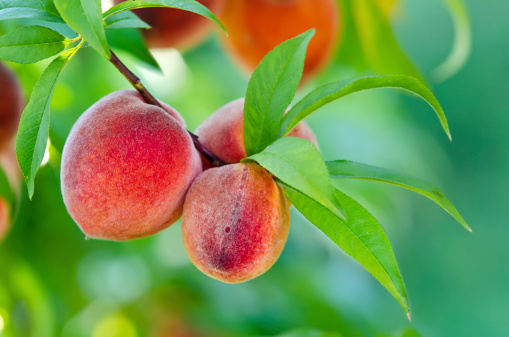
Produce 101: Stone Fruit
For this episode of Produce 101: Stone Fruit, we will be discussing peaches, plums, nectarines, and cherries.
Are you ordering or storing your stone fruit for maximum freshness and flavor? All stone fruit sold is picked ripe, but that doesn’t mean it is ready to eat. You have a little homework to do on your part.
I love stone fruit, in fact, I start marking off the days on a calendar in anticipation of the first of the domestic crop. There are a multitude of stone fruits available, but I am only going to focus on peaches, nectarines and plums for this edition. I threw in a sprinkle of cherries at the end. Kind of like the cherry on top :)
Why is it called a Stone Fruit?
Technically, stone fruit are drupes: a fruit with a hard seed encased in a soft flesh. Other examples of drupes are olives and mangos. The term “stone fruit” typically refers to the seed, or pit of the fruit. The seeds of these varieties are encased in a hard shell, or stone. This family of fruits is also related to the rose.
How to Ripen Your Stone Fruit
While the sugar content of a peach or nectarine won’t change once they’ve been picked, they will continue to mature and the flesh will soften. You can warm them up a bit until the desired stage of ripeness is achieved, and then to slow it down, just place them in the cooler. What I mean by “warm them up” is to keep them out of your cooler in your dry storage area (but not near a heat source, like the stove) until they are ready to eat. Once they are ripened to your liking, then you refrigerate them.
How to Properly Store Your Stone Fruit Once Ripened
- The optimum temperature to store your stone fruit is 32-40 degrees F.
- The best place to store them is in the front of your cooler (3)

How to Tell if Your Stone Fruit is Ripe
Much like melons, the nose knows. Mature peaches and nectarines will have a sweet, almost floral aroma. You can also gently apply pressure to the stem end, and when it yields, your fruit is ready to eat.
Avoid dropping the cases, as all stone fruit is very susceptible to bruising. Stone fruit is usually eaten as a hand fruit, so bruises will take away from the appearance, and the bruises also just don’t taste great. Peaches, plums, and nectarines are also very susceptible to bruising, with peaches and nectarines more so than plums.
How to Buy Stone Fruit to Get the Most out of Your Food Cost
If you’re looking to get the most out of your food cost, you may want to look at how you’re buying your stone fruit. It’s packed in two main ways.
Volume Filled Stone Fruit
A Volume Filled pack is where they take the product and loosely fill it in a twenty pound box and then ship. They’re typically packed and shipped much firmer, and they will require a little longer to ripen on your end. Per unit they’re a little cheaper.
Tray Packed Stone Fruit
There’s also Tray Pack, and that’s exactly what it sounds like. They’re single or double layer. Each fruit is packed nestled into its own little cup. They are typically sent a little riper, and they’re a little easier for you to ripen at the end. They don’t bruise as easily because they’re separated. They also have a count number associated with them, which is the number of pieces per box.
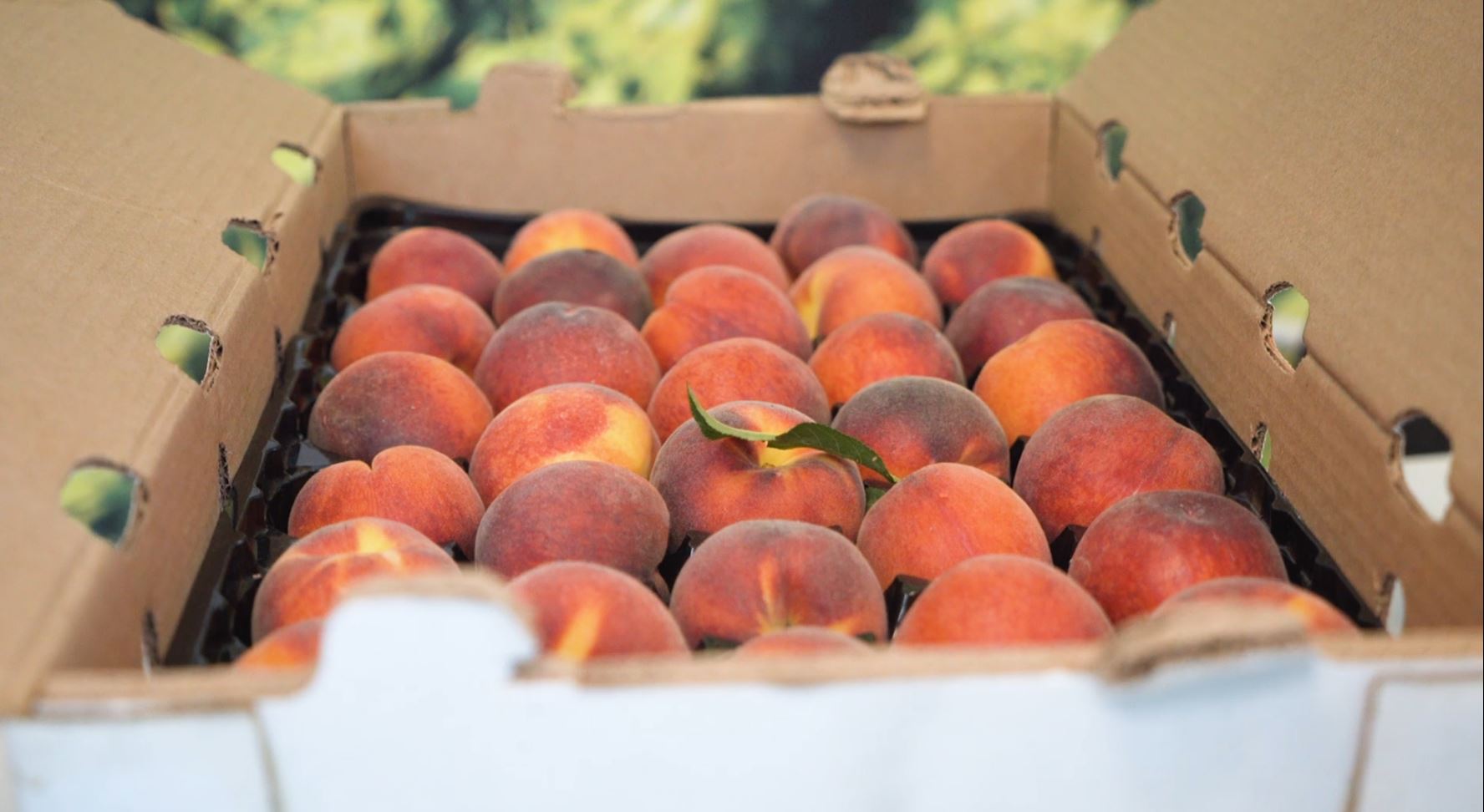
Produce 101: Stone Fruit–Let’s Talk About Peaches and Nectarines
Clingstone vs. Freestone?
Simply put, these are terms used to describe how the flesh attaches to the pit of the fruit, and is almost exclusively used when describing peaches. Clingstone varieties’ flesh literally clings to the pit, while the freestone varieties are easily separated from the pit. Check out my video on clingstone vs. freestone peaches which explains it a little more.
Which is Better, White Flesh or Yellow Flesh Fruit?
That depends on what you prefer. White flesh stone fruits typically have lower acid (also called sub-acid) and are almost syrupy sweet, while yellow-fleshed stone fruits have a sharper acidity that balances the flavor and rounds things out a bit better.
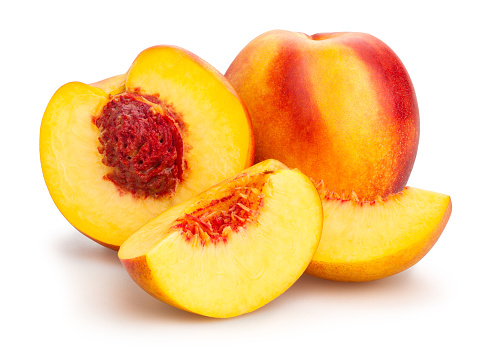
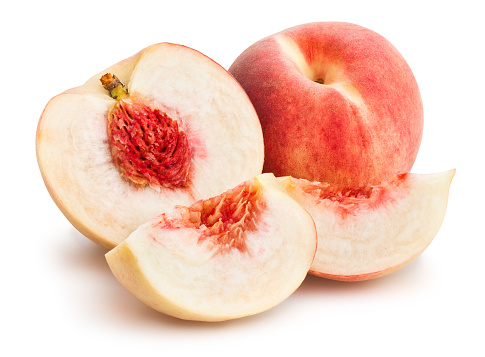
What the Difference Between a Peach and a Nectarine?
Most people wonder if a peach and nectarine are the same. What’s the difference? Well, botanists believe the peach came first, and then a natural genetic mutation inhibited the formation of the fuzz–so they’re identical fruits with one very small difference.
Grades of Peaches and Nectarines
Peaches and nectarines share the same grading standards:
- U.S. Fancy
- U.S. Extra #1
- U.S. #1
- U.S. #2
These standards are based on physical appearance, with the percentage of blushing of the skin being the main determinant. In addition, there is a three-tier index used in California that is based more on the ripeness of the fruit:
- U.S. Mature
- Well Mature
- Tree Ripened
“Well Mature” is the point at which the fruit will continue to ripen without needing to be exposed to an external ethylene source.
Produce 101: Stone Fruit–Let’s Talk About Plums
Plums are a bit different, as there are a myriad of colors, shapes and varieties available, though all are handled and ripened the same way. The skin is a little tangier, and it’s typically a little thinner. When I say plums come in a myriad of colors, shapes, and sizes, I am not kidding. There are countless kinds of plums, and that’s without getting into the fun hybrids like pluots, plumcots, apriums, and more hybrid names. Check out this video I did on pluots.
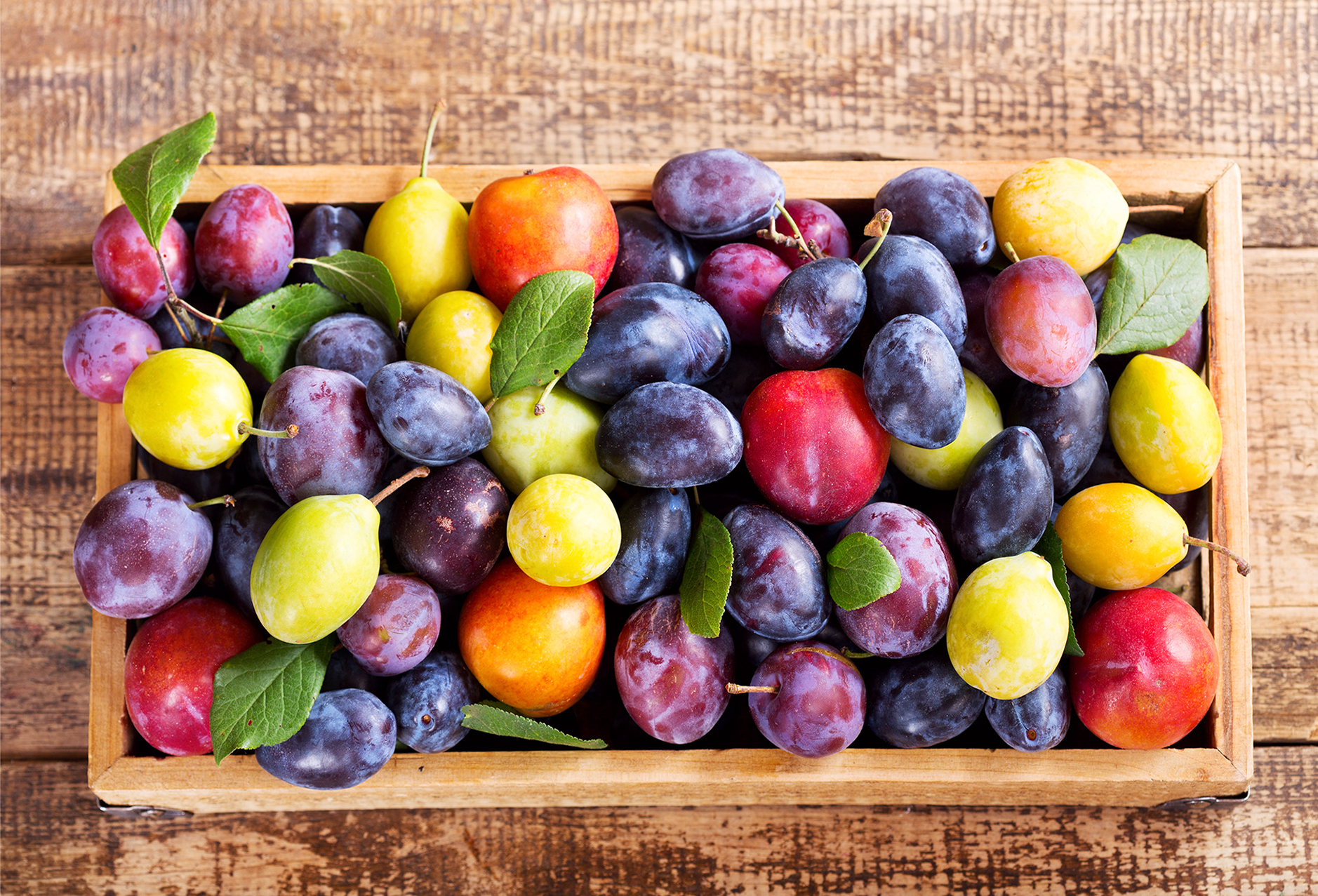
Grades of Plums
Plums have four USDA Standards:
- U.S. Fancy
- U.S. #1
- U.S. Combination
- U.S. #2, based mainly on physical appearances
Plums should be ripened in the same manner as a peach or nectarine, but they won’t have the aromatic maturity. Test the stem end to determine the maturity to check their ripeness. If it yields to pressure, it is ready to go.
Produce 101: Stone Fruit–Let’s Talk About Cherries
Cherries don’t ripen once they’re picked. They’re picked when the farmer believes they’re at the peak of their flavor. You want to make sure the color is right for the variety. If you’re getting a Bing cherry, you want to make sure the color is deep red to almost burgundy. If you’re getting a Rainier cherry, you want to make sure it’s pale with a red blush.
You also want to make sure they’re dry. Cherries are very susceptible to water damage so wash them just before using.
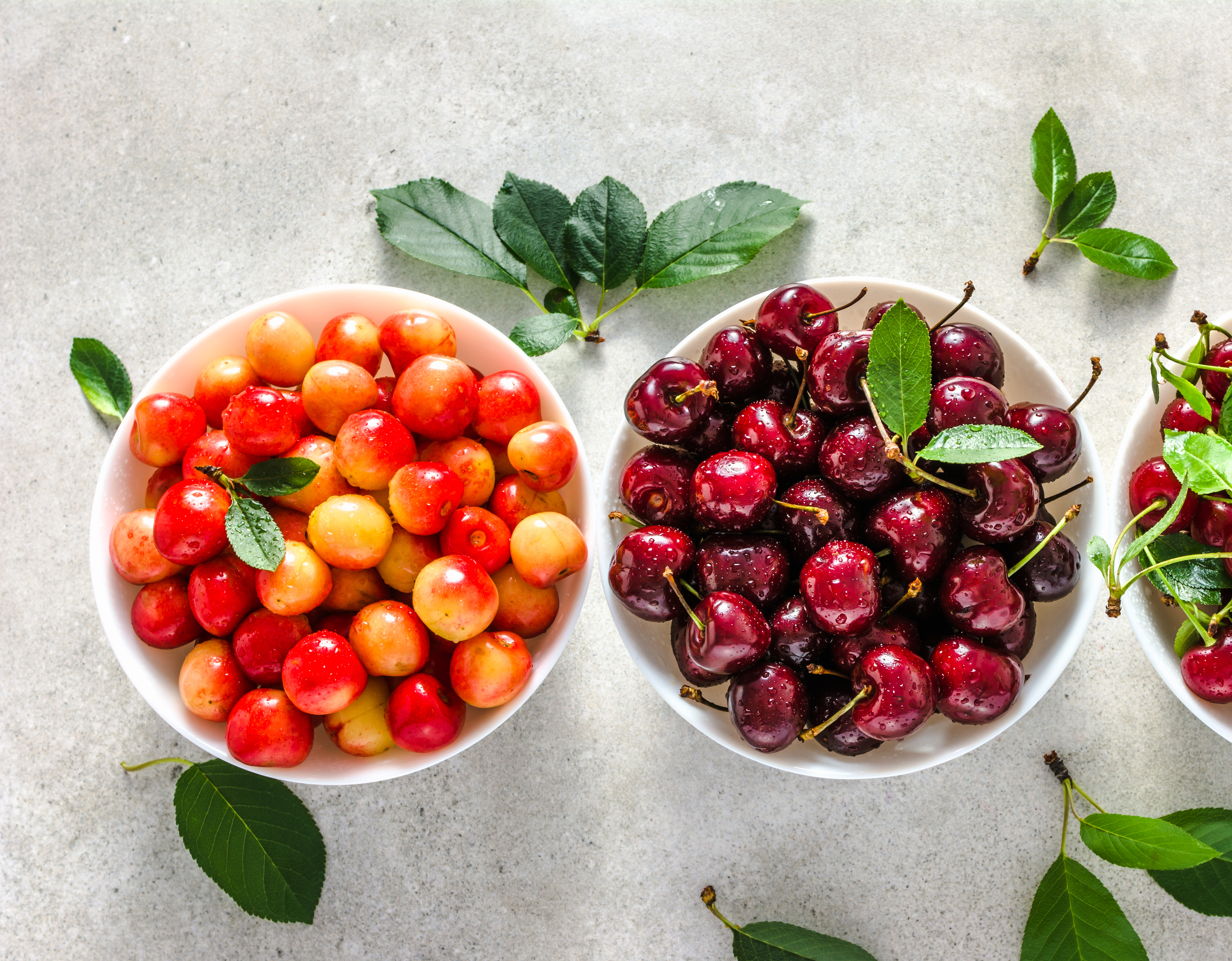
Stone fruit is sized in ways similar to every other commodity–it’s the number of pieces per box. Cherries are a little different. The old-school way was by the row, which is simply the number of rows across a carton. So the lower the row number the bigger the cherry. That’s really gone away as cherries are now typically sold and delivered pre-bagged.
And that, my friends, is the basics of stone fruit.
Click to watch Dan as he goes over Produce 101: Stone Fruit
The summer is the most abundant time of year for stone fruit. Contact your Sales Consultant about what stone fruit is available to add to your next order. If you are not a customer, find out how to become one today!
Content provided by Chef Daniel Snowden, the Director of Culinary Development for FreshPoint Central Florida. He has been in the produce industry almost 20 years, and loves getting geeky about food. Additional contributions by Lisa Brizard.
Some tools you can use:
Visit freshpoint.com for our seasonal availability guides—and while you are there, check out the FreshPress, our latest market report. Place your orders online with ease at myfreshpoint.com. Did you know you can receive real-time reliable delivery alerts on the day of your delivery? Activate and subscribe at FreshPoint.com/mydelivery
Download our app and take your produce management on the go. Place orders, review flyers, watch videos…all in one spot!
Find out more details about our UBU program, and how we are shining a spotlight on food waste while making value and food safety a priority.
We buy local to strengthen regional economies, support family farms, preserve the local landscape, and to provide fresh-from-the-farm food to our customers. Local.freshpoint.com connects you to your local farmers like never before! Customize your search by zip, city, state, radius…even by crops and growing methods. Pop in your zip code and learn about our local farmers.
Socialize with us!
Did you know we are on YouTube? Head over to our page and check out our 75+ videos. Don’t forget to subscribe, and also be a part of our Bell Team—hit the little bell icon to get notifications when we upload new videos.
Follow FreshPoint, Inc. on Facebook, Twitter, Instagram, and LinkedIn…and follow The Produce Hunter on Instagram as she finds the best specialty produce at the Santa Monica Farmers Market.

